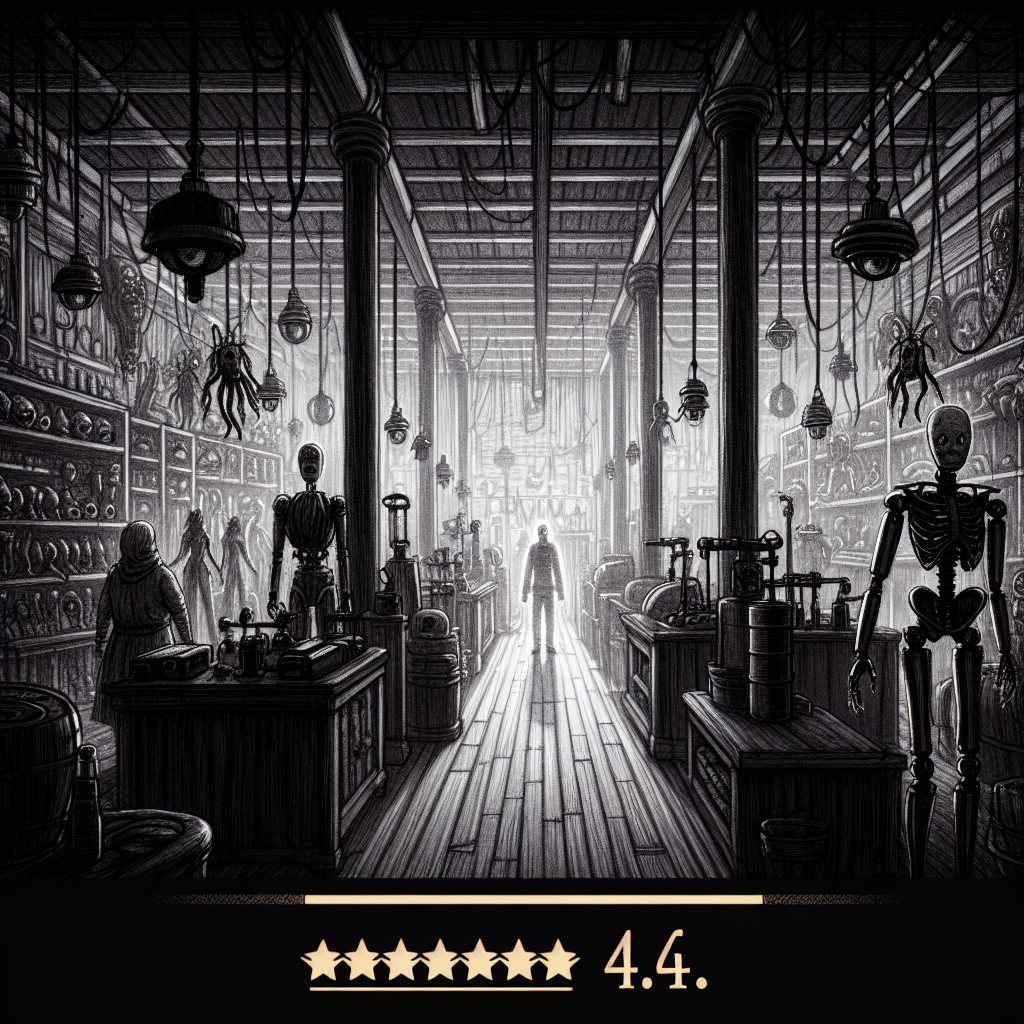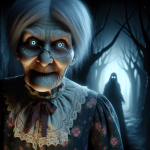“Five Nights at Freddy’s,” created by Scott Cawthon, is a renowned horror game series that has captivated audiences with its unique blend of suspense and terror. The game places players in the role of a night security guard at Freddy Fazbear’s Pizza, where they must survive five nights while being hunted by animatronic characters. With a rating of 4.6, the series has garnered critical acclaim for its innovative gameplay mechanics, atmospheric tension, and intricate lore, making it a standout in the horror genre.
The Evolution Of Horror In Five Nights At Freddy’s: Scott Cawthon’s Mastery
The evolution of horror in the Five Nights at Freddy’s series, masterminded by Scott Cawthon, is a testament to the transformative power of innovative game design and storytelling. From its inception, the franchise has captivated audiences with its unique blend of psychological terror and intricate lore, setting a new standard in the horror genre. The journey began in 2014 with the release of the first game, which introduced players to the eerie world of Freddy Fazbear’s Pizza, a seemingly innocent family restaurant with a dark secret. The game’s premise was simple yet profoundly effective: players assume the role of a night security guard tasked with surviving five nights while being hunted by animatronic characters.
As the series progressed, Cawthon’s mastery of horror became increasingly evident. The second installment, Five Nights at Freddy’s 2, expanded on the original’s mechanics by introducing new animatronics and a more complex security system. This sequel not only heightened the sense of dread but also deepened the narrative, revealing more about the sinister history of Freddy Fazbear’s Pizza. The addition of mini-games and hidden lore elements encouraged players to piece together the story, creating a more immersive and engaging experience.
Transitioning to Five Nights at Freddy’s 3, Cawthon continued to innovate by shifting the focus from survival to uncovering the truth behind the haunted animatronics. Set in a horror attraction based on the events of the previous games, this installment introduced the concept of “phantom” animatronics and a single, relentless antagonist known as Springtrap. The game’s atmosphere was further enhanced by its use of audio and visual hallucinations, which kept players on edge and contributed to the overall sense of unease.
The fourth game in the series took a bold departure from its predecessors by placing players in the role of a child experiencing nightmarish visions. Set in a suburban home, Five Nights at Freddy’s 4 relied heavily on sound cues and limited visibility to create an intense and claustrophobic experience. This shift in perspective not only added a new layer of psychological horror but also provided deeper insights into the series’ lore, particularly the origins of the animatronics and their connection to the protagonist.
With the release of Five Nights at Freddy’s: Sister Location, Cawthon once again demonstrated his ability to reinvent the franchise. This installment introduced a more narrative-driven approach, with players exploring a facility designed to house and maintain animatronics. The game’s structure was more varied, featuring different tasks and challenges each night, which kept the gameplay fresh and unpredictable. Additionally, the voice acting and character interactions added a new dimension to the storytelling, making the experience more immersive and emotionally engaging.
Throughout the series, Cawthon has consistently pushed the boundaries of what horror games can achieve. His use of jump scares, atmospheric tension, and intricate lore has created a unique and compelling experience that has resonated with players worldwide. Moreover, the community’s involvement in uncovering hidden secrets and theories has fostered a sense of camaraderie and excitement, further enhancing the franchise’s appeal.
In conclusion, the evolution of horror in Five Nights at Freddy’s is a testament to Scott Cawthon’s ingenuity and dedication to his craft. By continually refining gameplay mechanics, deepening the narrative, and exploring new ways to terrify players, Cawthon has solidified his place as a master of horror. The series’ enduring popularity and influence on the genre are a reflection of his ability to create a truly unforgettable gaming experience.
Analyzing The Psychological Thrills In Five Nights At Freddy’s By Scott Cawthon

“Five Nights at Freddy’s,” created by Scott Cawthon, has become a cornerstone in the realm of horror video games, captivating players with its unique blend of psychological thrills and jump scares. The game’s success can be attributed to its ability to tap into deep-seated fears and anxieties, creating an atmosphere of relentless tension and dread. By analyzing the psychological elements embedded within the game, one can gain a deeper understanding of why “Five Nights at Freddy’s” has left such an indelible mark on the horror genre.
At the heart of “Five Nights at Freddy’s” lies the concept of fear of the unknown. Players assume the role of a night security guard at Freddy Fazbear’s Pizza, a seemingly innocuous family restaurant. However, as the night progresses, the animatronic characters come to life with malevolent intent. This premise alone sets the stage for a psychological horror experience, as players are constantly on edge, anticipating the next move of these unpredictable animatronics. The fear of the unknown is a powerful psychological trigger, and Cawthon masterfully exploits this by keeping players in a state of perpetual uncertainty.
Moreover, the game’s mechanics further enhance the psychological tension. Players are confined to a small office with limited resources, such as security cameras and doors that can be closed to keep the animatronics at bay. The need to constantly monitor the cameras and manage power consumption creates a sense of helplessness and vulnerability. This feeling of being trapped, combined with the looming threat of the animatronics, heightens the player’s anxiety and keeps them engaged in a state of heightened alertness.
Transitioning to another key element, the use of sound in “Five Nights at Freddy’s” plays a crucial role in building psychological tension. The game’s audio design is meticulously crafted to create an immersive and unsettling experience. The ambient noises, such as the hum of machinery and distant footsteps, serve to amplify the player’s sense of isolation and impending danger. Additionally, the sudden, jarring sounds that accompany the animatronics’ movements or attacks are designed to startle and disorient the player, further intensifying the fear response.
Furthermore, the game’s narrative and lore contribute significantly to its psychological impact. Through subtle hints and hidden messages, players uncover a dark and disturbing backstory involving missing children and haunted animatronics. This narrative depth adds layers of complexity to the game, encouraging players to piece together the story while grappling with their own fears. The sense of mystery and intrigue surrounding the lore keeps players invested and perpetuates the psychological tension long after the game is turned off.
In addition to these elements, the visual design of the animatronics themselves is a masterclass in evoking fear. The uncanny valley effect, where the animatronics appear almost human but with unsettling, exaggerated features, triggers a primal fear response. Their lifeless eyes and jerky movements create a sense of unease that is difficult to shake. This visual dissonance, combined with the knowledge that these creatures are actively hunting the player, makes for a profoundly disturbing experience.
In conclusion, “Five Nights at Freddy’s” by Scott Cawthon is a masterful example of psychological horror in video games. Through its clever use of fear of the unknown, immersive mechanics, unsettling sound design, intricate narrative, and disturbing visual elements, the game creates an atmosphere of relentless tension and dread. By tapping into fundamental human fears and anxieties, Cawthon has crafted a horror experience that resonates deeply with players, ensuring that “Five Nights at Freddy’s” remains a seminal work in the genre.
The Impact Of Scott Cawthon’s Five Nights At Freddy’s On Modern Horror Gaming
Scott Cawthon’s “Five Nights at Freddy’s” has undeniably left an indelible mark on the landscape of modern horror gaming. Since its release in 2014, the game has not only captivated audiences with its unique blend of suspense and terror but has also influenced the development of subsequent horror titles. The impact of “Five Nights at Freddy’s” on the genre is multifaceted, encompassing its innovative gameplay mechanics, its narrative depth, and its cultural resonance.
To begin with, the gameplay mechanics of “Five Nights at Freddy’s” introduced a novel approach to horror. Unlike traditional horror games that often rely on exploration and combat, Cawthon’s creation places the player in a stationary position, tasked with monitoring security cameras to survive against animatronic antagonists. This mechanic fosters a sense of claustrophobia and helplessness, heightening the tension and fear. The limited resources, such as power supply, further amplify the stakes, forcing players to make strategic decisions under pressure. This innovative design has inspired numerous indie developers to experiment with similar mechanics, leading to a wave of horror games that prioritize psychological tension over action.
Moreover, the narrative depth of “Five Nights at Freddy’s” has contributed significantly to its impact. The game weaves a complex and intriguing story through environmental storytelling, cryptic messages, and hidden lore. Players are encouraged to piece together the narrative from scattered clues, creating a sense of mystery and engagement. This method of storytelling has become increasingly popular in modern horror games, as it allows for a more immersive and interactive experience. Games like “Outlast” and “Layers of Fear” have adopted similar techniques, emphasizing the importance of narrative in creating a compelling horror experience.
In addition to its gameplay and narrative innovations, “Five Nights at Freddy’s” has achieved substantial cultural resonance. The game’s distinctive characters, such as Freddy Fazbear and Foxy the Pirate, have become iconic figures in the gaming community. The series has spawned a plethora of fan art, theories, and even merchandise, demonstrating its widespread appeal. This cultural impact extends beyond the gaming sphere, influencing other media such as books and films. The upcoming “Five Nights at Freddy’s” movie adaptation is a testament to the franchise’s enduring popularity and its influence on popular culture.
Furthermore, the success of “Five Nights at Freddy’s” has paved the way for indie developers in the horror genre. Scott Cawthon’s journey from an independent developer to a renowned figure in the gaming industry serves as an inspiration for aspiring game creators. The game’s success story highlights the potential for indie games to achieve mainstream recognition and commercial success. This has encouraged a surge of creativity and innovation within the indie horror game community, leading to the development of unique and diverse titles that push the boundaries of the genre.
In conclusion, Scott Cawthon’s “Five Nights at Freddy’s” has had a profound impact on modern horror gaming. Its innovative gameplay mechanics, narrative depth, and cultural resonance have not only captivated players but also influenced the development of subsequent horror titles. The game’s success has also inspired a new generation of indie developers, fostering creativity and innovation within the genre. As the legacy of “Five Nights at Freddy’s” continues to grow, its influence on the horror gaming landscape remains undeniable, cementing its place as a seminal work in the history of video games.Five Nights at Freddy’s, created by Scott Cawthon, is a highly acclaimed horror game series with a rating of 4.6. The series has captivated players with its unique blend of suspense, jump scares, and intricate lore, solidifying its place as a standout in the horror genre.




